life-style, australia, explore, travel, explore travel, holiday ideas, mt kosciuzsko, moonbah hut, adaminaby, lake crackenback
After the ski season, Bernadette Chua finds the fertile lands of the Snowy Mountains are a paradise for Aussies looking for a holiday in their backyard. When the temperature drops and the skies fill with snowflakes, more than 750,000 skiers and snowboarders normally descend on the New South Wales alpine resorts. Unbeknownst to many of the keen travellers that visit this magical part of NSW during winter, the Snowy Mountains outside of the snow season is a playground for outdoor sports enthusiasts and lovers of art, culture and heritage. The High Country was first settled in the 1800s by European stockmen, graziers and landholders, attracted by the fertile grazing plains. Immortalised in the second stanza of Dorothea Mackellar’s poem “My Country” with the line, “I love a sunburnt country”, the rugged mountain ranges of the Snowy Mountains have become a part of Australia’s identity. The October long weekend heralds the start of the river fishing season, where the melting snow flows into the lakes, rivers and streams. Aside from brown trout, the estuaries are stocked with other native fish like Murray cod and golden perch. When the warmer weather descends on the Snowies, the slopes of Mount Kosciuszko are lit up with a succession of wildflowers like daisies, everlastings and billy buttons. It’s the prime time for hikers and bikers, with clear blue skies and cooler weather for day or camping trips. And come high summer, Lake Jindabyne, Lake Eucumbene and Tantangara Reservoir come alive with waterskiers, wakeboarders, kayakers and boaters. The lazy two-and-a-half-hour drive from Canberra takes you along the Monaro Highway, passing through picturesque towns, including Michelago, Bredbo, Cooma, Berridale and Jindabyne. But off the beaten track, smaller towns such as Adaminaby and Nimmitabel are rich in colonial history. Further south is Bombala, a great place to spot a platypus from the reserve’s new lookout or head on to Delegate to see history come alive. Here are some of the things to do and discover in the Snowies. When the snow melts, hikers, cyclists and mountain bikers fill the roads and national parks. Of course, the most famous of all hikes is the journey to the summit of Mount Kosciuszko, Australia’s highest mountain. When you reach the top, there are sweeping views into Victoria across the Main Range and along the way, especially if you are hiking during summer, you’ll see rare alpine flowers. There are guided hikes and the experts will explain the history of the Snowies, as well as point out any flora and fauna native to the region. For something more challenging, try the 21-kilometre Mt Townsend Hike, which has majestic views of the alpine area and the glacial lakes below. The trail meanders through remote ridges and granite boulders and you’ll encounter few other hikers. From Namadgi National Park in the ACT through to Baw Baw in Victoria, the Australian Alps walking track is 650 kilometres of wilderness and takes in the length of the Snowy Monaro region. While it might take you 10 weeks to walk the full track, you can take on segments of the trail and cover the Main Range, crossing streams and passing by stunning lakes. There are some excellent day trips, such as the Bombala River Walk, especially during spring. From September, the banks burst into colour with yellow daffodils, while during autumn, walkers will see the trees shedding their multicoloured leaves. There’s also a good chance you’ll spot platypus larking in the water with their young. Tracks for mountain bikers – from beginners to experienced extreme riders – span hundreds of kilometres across the Snowies. A number of rides lead off the Lake Crackenback Trails for all types of riders, even for the kids. Around Cooma the trails at Mt Gladstone are in prime condition, while near Jindabyne the Mill Creek, Bungarra and Hatchery Bay trails are fun and varied. The Thredbo Valley Track can be done in segments, from Thredbo through to Crackenback and on the lower trail to Gaden Trout Hatchery. Thredbo’s trails open in late November with lift passes on offer to access the downhill and flow trails. Thredbo Mountain Bike Park has some of the best alpine riding in the country; hire an experienced local guide to take you around the tracks or a coach to teach you some new tricks. Bikes, including ebikes, are available for rent throughout the region. For a special experience, check out the full moon ebike tours to Mt Kosciuszko run by Sacred Ride. The trickling rivers and streams that flow from the mountains make the Snowies this state’s premier trout fishing region. The cold waters are filled with nutrient-rich food the trout feast on. Expert guides will take you to their favourite spots and share their angling secrets. There are a number of places, like the cosy Moonbah Hut in Jindabyne or Fontenoy’s cottages in Adaminaby, where you can stay and walk to fly fishing spots. Moonbah, for instance, is just 100 metres away from its namesake river, which is considered to be one of Australia’s best places to fly fish. Fontenoy faces the Murrumbidgee River where the trout stocks are in abundance. The property has private access to three kilometres of river frontage, making it a keen spot for many anglers. Lake Jindabyne and Lake Eucumbene are fantastic spots where you can also land the elusive ‘trophy trout’. Ask the locals where the best spots are, as well as what bait or flies to use. The high plains and valleys of the Snowies are immortalised in Banjo Paterson’s “The Man from Snowy River”. Aside from short horse rides, visitors can head off on treks of up to six days in the saddle with a number of local legends including Peter Cochran and John Rudd, considered to be the grandfather of the Snowy Mountains. Perched on his trusty steed with his Driza-Bone and Akubra, Mr Rudd looks like the original man from Snowy River. He’s the head of Reynella Rides, a horse trek company celebrating its 50th birthday this year. The safaris cater for a wide range of capabilities whether you have done little or no riding at all. The rides explore Kosciuszko National Park and a six-day trek normally covers about 160 kilometres. After a day’s riding, sit by the campfire and share stories of the day. Mr Rudd and his wife Roslyn will prepare a three-course meal with freshly made damper. There are a number of eco-lodges as well as wellness resorts if you want to unwind. Just 15 minutes’ drive from Thredbo, Lake Crackenback Resort & Spa has a fantastic wellness program. Here, facing the tranquil lake, the spa offers a range of treatments including hot stone massages, manicures, clay body wraps and more. The Snowies is also home to some fantastic golf courses. Thredbo Golf Course is challenging – the highest in Australia, its nine-hole green is dotted with wildflowers and lined with eucalyptus trees next to the Thredbo River. During the summer, there are great places for watersports, including Khancoban Pondage. Lake Jindabyne is a calm, beautiful spot for kayaking, canoeing or paddle boarding. Talbingo Reservoir allows power boating with no restrictions so it’s a fantastic spot for wakeboarding and jetskiing. If you want to take the long road on a Snowies region day trip, head out on a drive from Cooma. Loop through Bombala, Dalgety, Jindabyne and Berridale to see the contrast in scenery – from plains and rivers, to mountains and lakes. The charming town of Bombala grows some of the best lavender in the world; it is said to rival that produced in France. In Dalgety, there is a lovely historic town and river walk which takes you to 26 places of interest around the town. You’ll see the police station/court house which was the first public building in town, as well as the Gothic church, Our Lady Star of the Sea. The Snowies is home to a raft of writers, musicians, artists and sculptors. The legendary Australian poet Banjo Paterson spent time in the area, penning some of his greatest works, and Dorothea Mackellar was a governess at Coolringdon Homestead near Cooma. During the year, the Raglan Gallery and Cultural Centre in Cooma hosts international and local artists. The Bundian Way Gallery and Aboriginal and Community Arts Centre in Delegate celebrates the history and art of the Indigenous community in the Snowies. For history lovers, the Early Settlers Hut just outside Delegate has been preserved to show visitors what early pioneer life was like in the Snowies. The region also has strong links to gold mining, with thousands of immigrants from around the world flocking to the town of Kiandra. The town, 85 kilometres from Cooma, once had 15 hotels and 30 stores during the rush. But by 1861, the main rush was over and by 1905, gold mining had ceased. Now, you’ll find some significant sites including the old cemetery and heritage walks will take you past these relics. Before the snow melts, you may also be able to see the remnants of Old Jindabyne before the Snowy River became Lake Jindabyne as part of the Snowy Mountains Hydro-Electric Authority scheme in the 1960s. At Waste Point, the foundations of Australia’s most famous fishing lodge, The Creel, can be seen. Drive: The Snowy Mountains is 2.5 hours’ drive from Canberra along the Monaro Highway. From Newcastle, it’s about a six-hour drive. Coming from the west? Head via Adaminaby through the northern end of Kosciuszko National Park. From the South Coast, come up through Bombala and drop into the Platypus Country visitors information centre. Explore more: Check out snowymountains.com.au for some road trip routes and ideas if you want to take the long way. …you might also enjoy
https://nnimgt-a.akamaihd.net/transform/v1/crop/frm/GGnMDP6H6ep7kM2Dx35kRi/70a18762-8de2-4e01-90f3-4d445725f0c8.jpg/r7_12_2793_1586_w1200_h678_fmax.jpg
After the ski season, Bernadette Chua finds the fertile lands of the Snowy Mountains are a paradise for Aussies looking for a holiday in their backyard.
When the temperature drops and the skies fill with snowflakes, more than 750,000 skiers and snowboarders normally descend on the New South Wales alpine resorts.
Unbeknownst to many of the keen travellers that visit this magical part of NSW during winter, the Snowy Mountains outside of the snow season is a playground for outdoor sports enthusiasts and lovers of art, culture and heritage.
The High Country was first settled in the 1800s by European stockmen, graziers and landholders, attracted by the fertile grazing plains. Immortalised in the second stanza of Dorothea Mackellar’s poem “My Country” with the line, “I love a sunburnt country”, the rugged mountain ranges of the Snowy Mountains have become a part of Australia’s identity.
The October long weekend heralds the start of the river fishing season, where the melting snow flows into the lakes, rivers and streams. Aside from brown trout, the estuaries are stocked with other native fish like Murray cod and golden perch.
When the warmer weather descends on the Snowies, the slopes of Mount Kosciuszko are lit up with a succession of wildflowers like daisies, everlastings and billy buttons. It’s the prime time for hikers and bikers, with clear blue skies and cooler weather for day or camping trips.
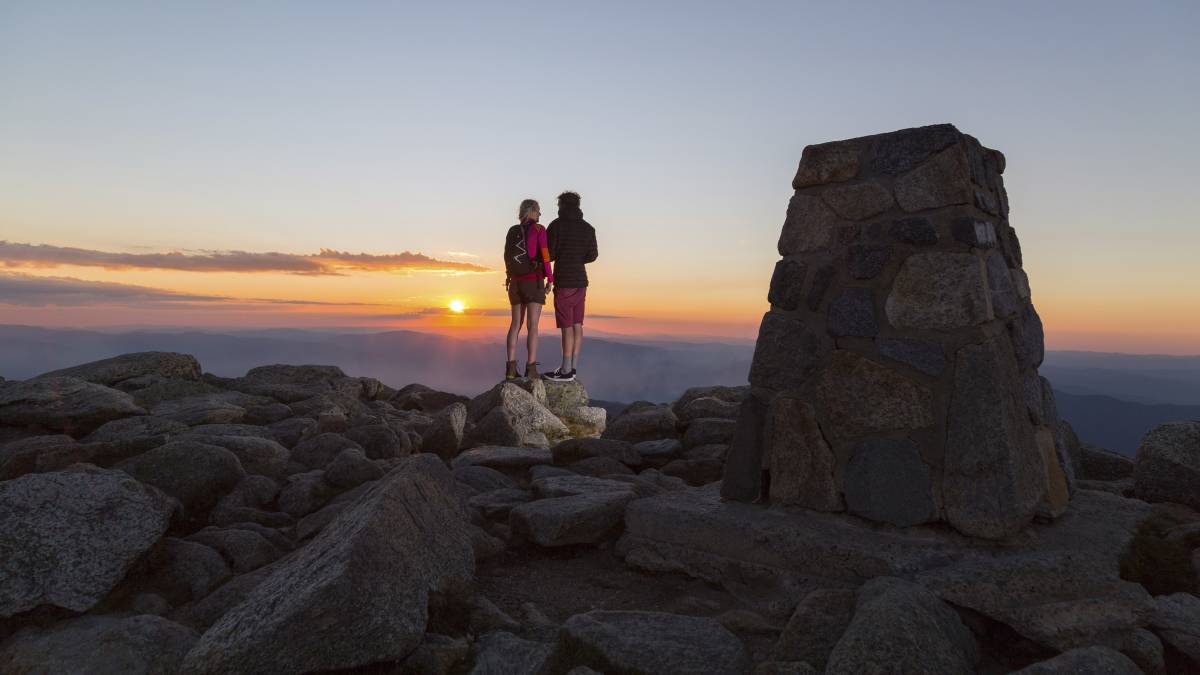
Take in sunset at the summit of Mount Kosciuszko in Kosciuszko National Park. Picture: Destination NSW
And come high summer, Lake Jindabyne, Lake Eucumbene and Tantangara Reservoir come alive with waterskiers, wakeboarders, kayakers and boaters.
The lazy two-and-a-half-hour drive from Canberra takes you along the Monaro Highway, passing through picturesque towns, including Michelago, Bredbo, Cooma, Berridale and Jindabyne.
But off the beaten track, smaller towns such as Adaminaby and Nimmitabel are rich in colonial history. Further south is Bombala, a great place to spot a platypus from the reserve’s new lookout or head on to Delegate to see history come alive.
Here are some of the things to do and discover in the Snowies.
Action and adventure
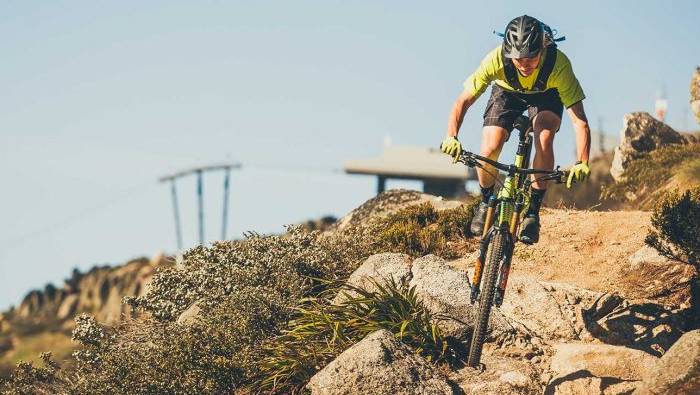
Swap skis for pedals and hit the Snowies when the white stuff melts for a whole new adventure.
When the snow melts, hikers, cyclists and mountain bikers fill the roads and national parks. Of course, the most famous of all hikes is the journey to the summit of Mount Kosciuszko, Australia’s highest mountain. When you reach the top, there are sweeping views into Victoria across the Main Range and along the way, especially if you are hiking during summer, you’ll see rare alpine flowers. There are guided hikes and the experts will explain the history of the Snowies, as well as point out any flora and fauna native to the region.
For something more challenging, try the 21-kilometre Mt Townsend Hike, which has majestic views of the alpine area and the glacial lakes below. The trail meanders through remote ridges and granite boulders and you’ll encounter few other hikers.
From Namadgi National Park in the ACT through to Baw Baw in Victoria, the Australian Alps walking track is 650 kilometres of wilderness and takes in the length of the Snowy Monaro region.
While it might take you 10 weeks to walk the full track, you can take on segments of the trail and cover the Main Range, crossing streams and passing by stunning lakes.
There are some excellent day trips, such as the Bombala River Walk, especially during spring. From September, the banks burst into colour with yellow daffodils, while during autumn, walkers will see the trees shedding their multicoloured leaves. There’s also a good chance you’ll spot platypus larking in the water with their young.
Tracks for mountain bikers – from beginners to experienced extreme riders – span hundreds of kilometres across the Snowies. A number of rides lead off the Lake Crackenback Trails for all types of riders, even for the kids. Around Cooma the trails at Mt Gladstone are in prime condition, while near Jindabyne the Mill Creek, Bungarra and Hatchery Bay trails are fun and varied. The Thredbo Valley Track can be done in segments, from Thredbo through to Crackenback and on the lower trail to Gaden Trout Hatchery.
Thredbo’s trails open in late November with lift passes on offer to access the downhill and flow trails. Thredbo Mountain Bike Park has some of the best alpine riding in the country; hire an experienced local guide to take you around the tracks or a coach to teach you some new tricks.
Bikes, including ebikes, are available for rent throughout the region. For a special experience, check out the full moon ebike tours to Mt Kosciuszko run by Sacred Ride.
The great outdoors
The trickling rivers and streams that flow from the mountains make the Snowies this state’s premier trout fishing region. The cold waters are filled with nutrient-rich food the trout feast on. Expert guides will take you to their favourite spots and share their angling secrets.
There are a number of places, like the cosy Moonbah Hut in Jindabyne or Fontenoy’s cottages in Adaminaby, where you can stay and walk to fly fishing spots. Moonbah, for instance, is just 100 metres away from its namesake river, which is considered to be one of Australia’s best places to fly fish.
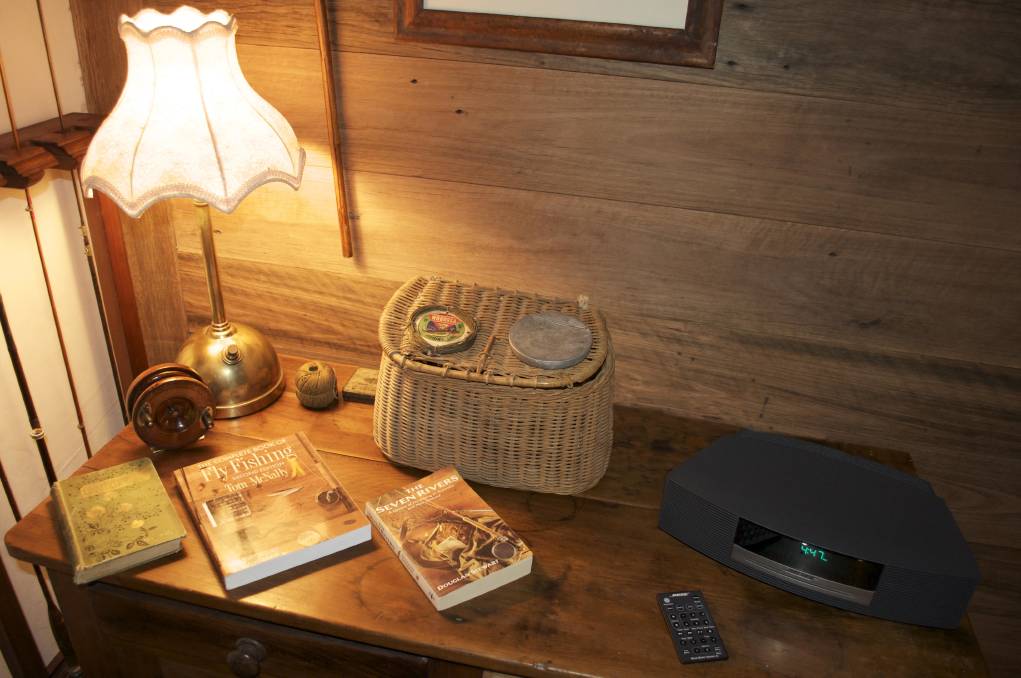
Fontenoy faces the Murrumbidgee River where the trout stocks are in abundance. The property has private access to three kilometres of river frontage, making it a keen spot for many anglers. Lake Jindabyne and Lake Eucumbene are fantastic spots where you can also land the elusive ‘trophy trout’. Ask the locals where the best spots are, as well as what bait or flies to use.
The high plains and valleys of the Snowies are immortalised in Banjo Paterson’s “The Man from Snowy River”. Aside from short horse rides, visitors can head off on treks of up to six days in the saddle with a number of local legends including Peter Cochran and John Rudd, considered to be the grandfather of the Snowy Mountains.
Perched on his trusty steed with his Driza-Bone and Akubra, Mr Rudd looks like the original man from Snowy River. He’s the head of Reynella Rides, a horse trek company celebrating its 50th birthday this year. The safaris cater for a wide range of capabilities whether you have done little or no riding at all. The rides explore Kosciuszko National Park and a six-day trek normally covers about 160 kilometres. After a day’s riding, sit by the campfire and share stories of the day. Mr Rudd and his wife Roslyn will prepare a three-course meal with freshly made damper.
Take the slow road
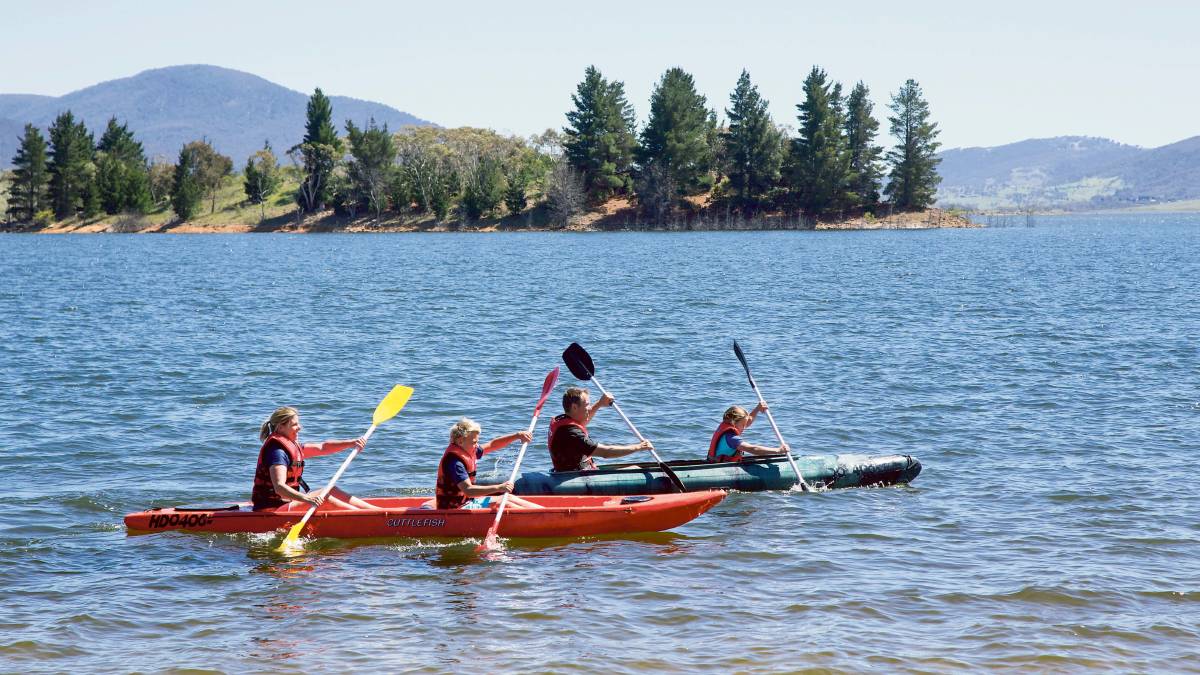
A scenic kayak on Lake Jindabyne in the Snowy Mountains is the perfect family day out. Picture: Destination NSW
There are a number of eco-lodges as well as wellness resorts if you want to unwind. Just 15 minutes’ drive from Thredbo, Lake Crackenback Resort & Spa has a fantastic wellness program. Here, facing the tranquil lake, the spa offers a range of treatments including hot stone massages, manicures, clay body wraps and more.
The Snowies is also home to some fantastic golf courses. Thredbo Golf Course is challenging – the highest in Australia, its nine-hole green is dotted with wildflowers and lined with eucalyptus trees next to the Thredbo River.
During the summer, there are great places for watersports, including Khancoban Pondage. Lake Jindabyne is a calm, beautiful spot for kayaking, canoeing or paddle boarding. Talbingo Reservoir allows power boating with no restrictions so it’s a fantastic spot for wakeboarding and jetskiing.
If you want to take the long road on a Snowies region day trip, head out on a drive from Cooma. Loop through Bombala, Dalgety, Jindabyne and Berridale to see the contrast in scenery – from plains and rivers, to mountains and lakes.
The charming town of Bombala grows some of the best lavender in the world; it is said to rival that produced in France.
In Dalgety, there is a lovely historic town and river walk which takes you to 26 places of interest around the town. You’ll see the police station/court house which was the first public building in town, as well as the Gothic church, Our Lady Star of the Sea.
Arts, culture, history
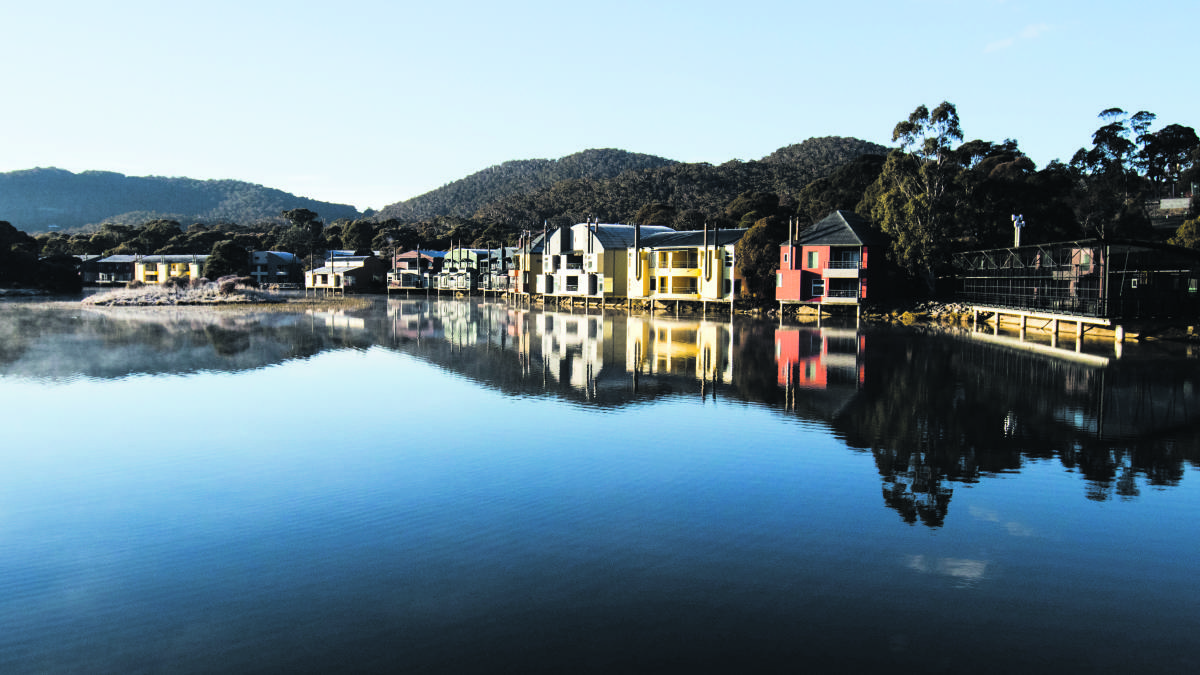
Lakeview apartments at Lake Crackenback Resport and Spa, Crackenback. Picture: Destination NSW
The Snowies is home to a raft of writers, musicians, artists and sculptors. The legendary Australian poet Banjo Paterson spent time in the area, penning some of his greatest works, and Dorothea Mackellar was a governess at Coolringdon Homestead near Cooma.
During the year, the Raglan Gallery and Cultural Centre in Cooma hosts international and local artists.
The Bundian Way Gallery and Aboriginal and Community Arts Centre in Delegate celebrates the history and art of the Indigenous community in the Snowies.
For history lovers, the Early Settlers Hut just outside Delegate has been preserved to show visitors what early pioneer life was like in the Snowies.
The region also has strong links to gold mining, with thousands of immigrants from around the world flocking to the town of Kiandra. The town, 85 kilometres from Cooma, once had 15 hotels and 30 stores during the rush. But by 1861, the main rush was over and by 1905, gold mining had ceased. Now, you’ll find some significant sites including the old cemetery and heritage walks will take you past these relics.
Before the snow melts, you may also be able to see the remnants of Old Jindabyne before the Snowy River became Lake Jindabyne as part of the Snowy Mountains Hydro-Electric Authority scheme in the 1960s. At Waste Point, the foundations of Australia’s most famous fishing lodge, The Creel, can be seen.

Drive: The Snowy Mountains is 2.5 hours’ drive from Canberra along the Monaro Highway. From Newcastle, it’s about a six-hour drive. Coming from the west? Head via Adaminaby through the northern end of Kosciuszko National Park. From the South Coast, come up through Bombala and drop into the Platypus Country visitors information centre.
Explore more: Check out snowymountains.com.au for some road trip routes and ideas if you want to take the long way.
While you’re here…
…you might also enjoy

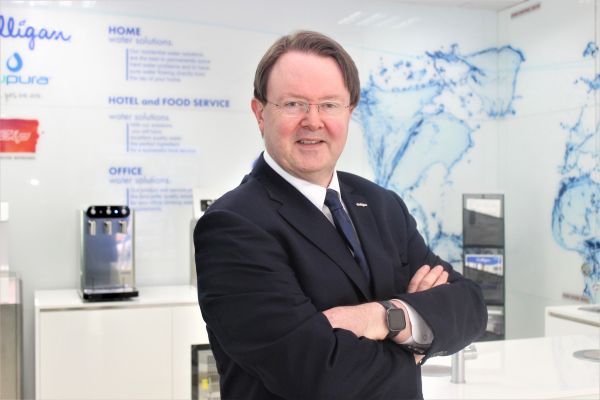

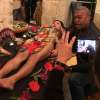
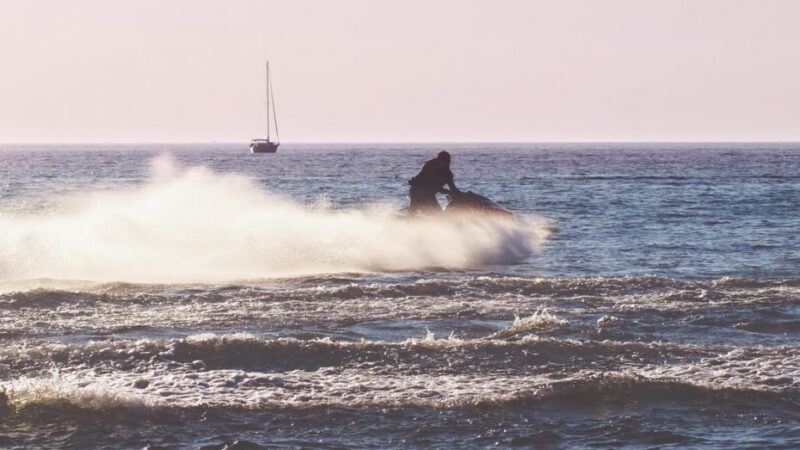
Recent Comments